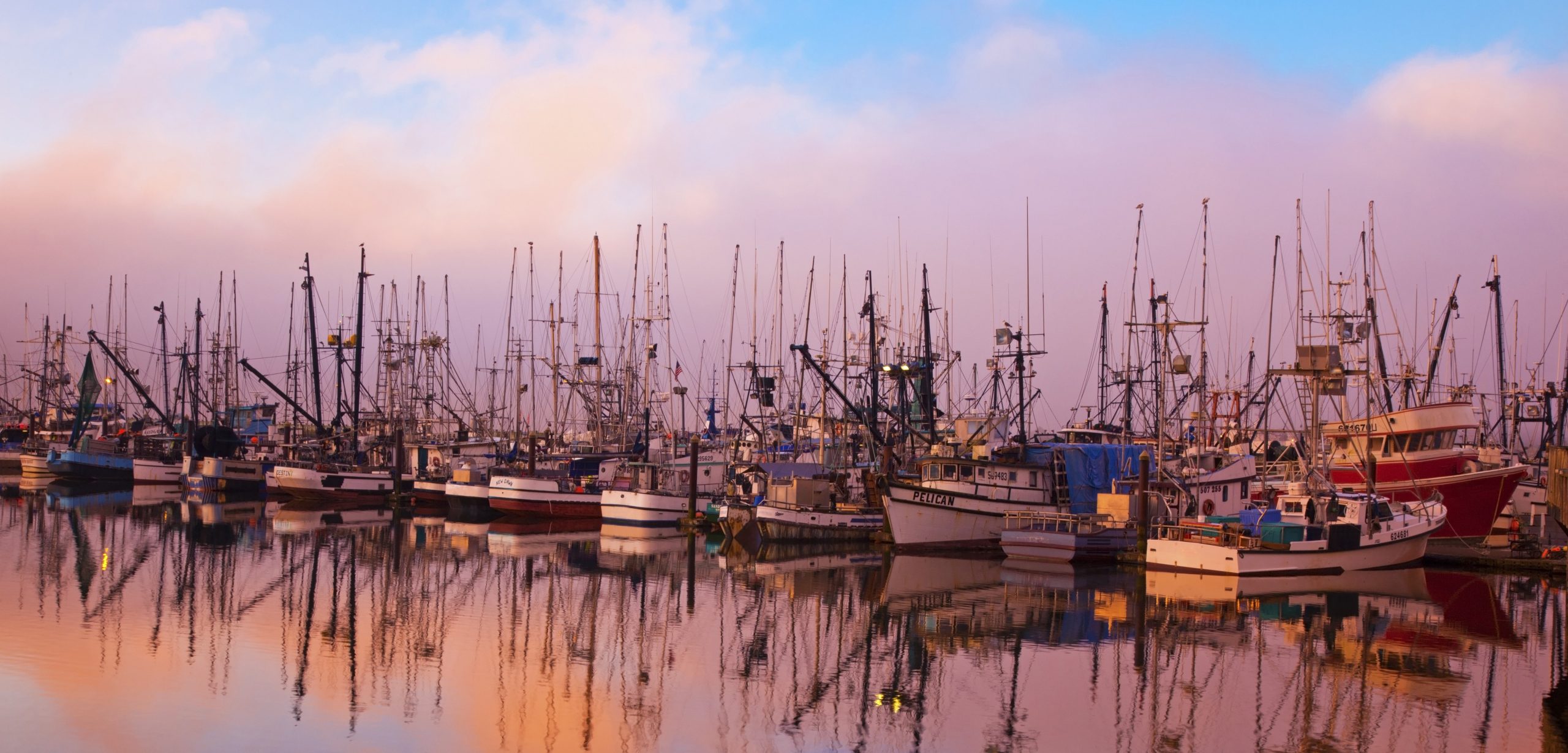Is Fisheries Policy Nimble Enough?
Fishing quotas don’t change as quickly as the weather.
Article body copy
It was supposed to be just another day on the Oregon coast. A fishing vessel is out to catch its allotted share of Pacific whiting (hake), a slender silvery fish that’s a favorite of surimi producers. But, lately, the normally abundant species is hard to find. The net is pulled in, and the haul is tallied—15 tonnes of fish for nine days of sailing. At this time last year, the haul was 100 tonnes. The catch is way off target.
“Four tonnes of fish, for nine hours’ worth of fishing?” says Joshua Brown, a fisheries observer on board the vessel. “It’s not worth the fuel.”
According to the ship’s captain, this one’s the worst haul he’s had in nine years. The shortage is even more confusing, because his quota for this season—the amount of fish allotted to him by the West Coast Groundfish Catch Share Program—was actually higher than it was last year.
The shortage brings up flaws in the way American fisheries are regulated: government agencies dole out quotas based on what they predict fish populations will be during the coming season, but fishermen have to work in the conditions as they actually are.
This year, any number of things could have gone wrong with the predictions. Some of the fishermen blame the warmer water, exacerbated by the Blob and this year’s El Niño, which are bringing tropical species to the northeast Pacific Ocean, while at the same time potentially driving the hake up toward Canada. Others blame the foreign demand that’s locked in their operations to particular fish.
But as climate change steers the future path of the environment off course, and these year-to-year abnormalities become more commonplace, can the science of fisheries management keep up? Are the programs that govern fisheries quotas responsive enough to meet rapidly changing conditions in the water?
Right now, US fisheries quotas in the northeast Pacific are determined using a deliberative process that’s not inherently nimble.
Under the new catch share program, adopted in 2011, the amount of fish allotted to each fishing license holder for each species is based on yearly stock assessments. These allotments are ultimately decided on by the Pacific Fishery Management Council, who, after consulting with scientists and with the public, vote on the annual quota for each species. This total quota is then divvied up and handed down to fishery sectors, and then to specific license holders who are guaranteed a portion of the lot.
But only recently have environmental considerations been included in the assessments themselves—a gap that isn’t specific to the US. Globally, only two percent of stock assessments used for policymaking account for ecosystem effects. And once the quotas are set for a season, they’re not revised until the next year.
Fifteen years ago, the US National Oceanic and Atmospheric Administration (NOAA) put out a call to make management more dynamic. The agency wanted to improve how the science could be done to account for factors like predator-prey interactions, or changes in habitat or temperature, to better predict future harvests on short timescales. On the ground, this remains a work in progress.
“Scientists are definitely trying to develop indicators that will give fishermen a warning, at least a few years in advance, of what could be happening out there,” says Mary Hunsicker, a scientist with NOAA’s Northwest Fisheries Science Center. But budgets at the federal level are tight. “We are stretched pretty thin.”
While the agencies are aware of the shortcomings, this is not an easy problem to fix, says Laura Koehn, a graduate student at the University of Washington’s School of Aquatic and Fishery Sciences, in Seattle.
“Basically, most people are on board that it’d be great to include relevant ecosystem-environmental components in stock assessments,” says Koehn. “Just how to do it, and the best way to do it—and how much to do—is debatable.”
For one, it’s difficult to determine which variables will have consistent effects that hold true year to year. For another, the best models can take years of dedicated research to build. The next big challenge is in putting the data to use and convincing fisheries managers—who actually set the quotas—to adopt the new models.
Meanwhile, Brown is trying to make the best of what’s in front of him. He says he doesn’t know if the shortfall is just a short-term shift, or the beginning of a long-term change. It’s hard to tell, he says, when the quotas were set before El Niño was declared.
Will policy change quickly enough? It’s hard to say. But at least the scientists and fishermen are asking the same questions.

